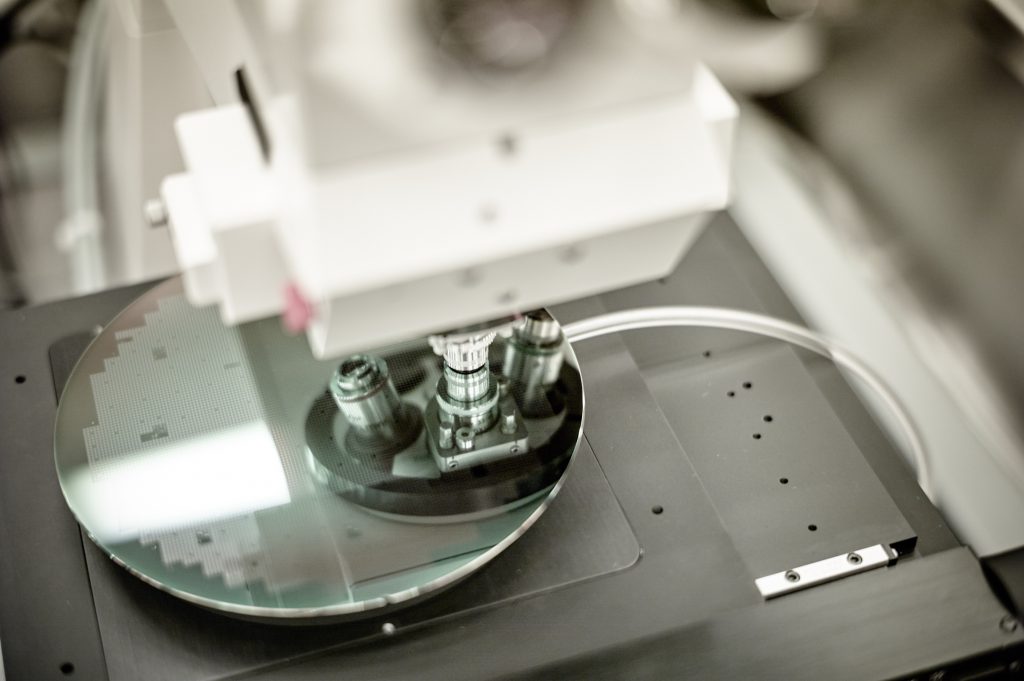Technological advances shaping web inspection in 2017 and beyond: CMOS Sensors
Keep your eye on these promising developments
Materials manufactured in a continuous roll or sheet—such as paper, textiles, film, foil, plastics, metals, glass or coatings—are most effectively inspected using machine vision line scan systems. These systems have been designed specifically to address the challenges of detecting and identifying defects in webs or objects moving at high speed. Line scan systems enable a complete surface inspection by building a continuous image, one row of pixels at a time, in the direction of the web’s motion. Image capture continues as long as the camera and web are operating. In addition to the unlimited pixels enabled by continuous motion, line scanning offers zero smear even at high speeds, higher dynamic range, greater processing efficiency, and a much lower cost per pixel than traditional area scan systems.

In 2017 and beyond, three key advances in technology will expand the capabilities of line scan systems and make them more affordable for web inspection applications. This is the first in a three part series that will discuss these advances.
Growth in the adoption of CMOS sensors in machine vision line scan systems will help drive down the cost of web inspection.
CMOS (complementary metal-oxide semiconductor) imager technology promises to continue to change the face of web inspection in 2017. CMOS technology isn’t new; in fact, it was patented in 1963. What is new today is the ubiquity of CMOS sensors; anyone with a cell phone has a CMOS sensor in their pocket.

To meet this increasing demand—and customer expectations for performance and capability—CMOS manufacturers have invested significantly in research and development to identify ways to produce higher quality, more effective sensors at a lower cost. The benefits of this investment are being felt not just by cell phone manufactures and consumers, but across industries.
While CMOS technology has been used in area scan cameras for some time, its integration into line scan camera technology has been slower to evolve. In 2017, CMOS in line scan cameras will become more and more common, expanding the use of these sensors in web inspections.
Those considering machine vision line scan systems for web inspection in 2017 will discover that CMOS is an enabling technology that helps deliver lower costs system wide—less expensive sensors, as well as less expensive lenses and cameras—without impacting fidelity.

First, CMOS enables smaller sensors and the use of many more sensors per wafer, or the use of much larger wafers. Since CMOS sensors are less costly, and sensor pricing tracks with cost per wafer, the total cost is less.
In addition, with CMOS, all signals are digitized on the main chip, making for lower noise and allowing for smaller pixels and improved image fidelity. Lower noise also enables increased gain, which can deliver an image equivalent to that provided by other technologies that typically require larger pixels. Similarly, smaller sensors also allow for smaller lenses for additional cost savings since a lens’s cost is a direct function of its size.
A camera’s readout electronics traditionally convert data from a sensor into a usable format for transmission to a computer or other device. With CMOS technology, however, the digitization of data on the sensor limits the functionality required of the camera, which means that a camera using CMOS can have a simpler design and be less expensive overall. Thanks to CMOS, it is possible invest in a camera that offers the desired resolution and speed at a total cost that is significantly less than it would have been just a few years ago. Conversely, it is also possible to invest in a camera that offers a much higher resolution or greater processing speed for just slightly more. It’s a tradeoff that can be tailored to the type of inspection required: for example, cameras used for a simple inspection can now cost far less, while cameras needed for more complex inspections are now available for a more reasonable price. Not surprisingly, the market for machine vision line scan systems is growing as prices decrease and the barrier to entry drops. Users are implementing more cameras per system and are beginning to use cameras in inspections where the technology wasn’t feasible before.

A case in point, the increase in the inspection of rice and other commodity agricultural products. Rice inspection was virtually non-existent just a few years ago, as producers relied on less optimal, manual methods for removing foreign objects from rice—or opted to not find or remove them at all. The cost of automated inspection was simply out of reach when compared to the overall value of the product. Today, as inspection technology becomes more and more affordable, nearly all rice is inspected. Typically, rice is dropped in a waterfall past a lightbar and line scan camera, which identifies foreign objects in real time. When a foreign object is found, a blast of compressed air is triggered, blowing the foreign object from the stream. Producers can assure the high quality of their product with a minimal investment in line scan technology.
Our next post in the series will explore the advances made in color imaging for line scan machine vision systems.



